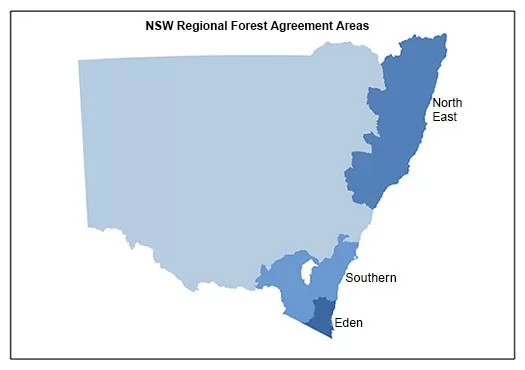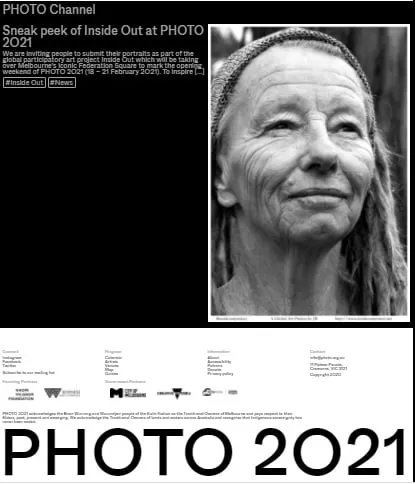NSW Forestry Corporation Admits Guilt in Destruction of Vital Habitat Trees To Avoid Criminal Trial
In a significant turn of events, the NSW Forestry Corporation has confessed to the destruction of crucial hollow-bearing habitat trees. This eleventh-hour admission comes as a resolution to avoid a looming criminal trial that would have dissected the corporation’s actions in detail.
The charges, dating back almost four years, revolve around the illegal destruction of three hollow-bearing trees nestled in the Wild Cattle Creek State Forest, near Coffs Harbour.
These trees, essential for various native species including endangered koalas, greater gliders, and owls, were felled in July 2020. The forest, renowned for its biodiversity, houses these vulnerable creatures who rely on the sanctity of hollow trees, a product of centuries of growth.
The story continues below this advertisement
This isn’t the first time Forestry Corporation has been in the spotlight for such infractions. A year and a half ago, the corporation admitted to illegally clearing six giant trees in the same forest during the same timeframe. According to forestry laws, trees exceeding 1.4 meters in diameter must be safeguarded, making these actions doubly concerning.
Sentencing for these charges is slated for September, with public interest advocate John Corkill vying for a voice in the proceedings. Corkill, an environmentalist and legal scholar, seeks to represent the Bellingen Environment Centre in a bid to shed light on the conduct of the Environment Protection Authority (EPA).
One of Corkill’s primary contentions is the perceived leniency of the EPA towards individuals and contractors involved in illegal logging activities. Despite the EPA’s authority to pursue such cases, Corkill notes a stark absence of actions against those responsible for the unlawful clearing.
The role of an amicus curiae, Latin for “friend of the court,” is pivotal here. If granted permission, Corkill intends to push Justice Nicola Pain to question the EPA’s enforcement strategies, particularly regarding its selective prosecution practices.
Corkill’s bid faces resistance from the EPA, which maintains that its prosecutorial decisions are grounded in evidence and adherence to regulatory policies. The agency asserts that the Forestry Corporation, as the entity responsible for the actions in question, is the appropriate defendant in this case.
In response, Forestry Corporation expressed regret over the destruction of the hollow-bearing trees, attributing the incident to the obscured hollows at the base of the trees, concealed by dense undergrowth.
Forestry acknowledged their stated commitment to retaining hollow-bearing trees, claiming that while 411 were preserved, three fell victim to oversight during a regulatory transition period.
As the legal proceedings unfold, the spotlight remains on the delicate balance between environmental conservation and industrial activities, underscoring the need for stringent enforcement and accountability measures to safeguard our natural heritage.
Who Polices Forestry Corp’s new “Protester Compliance Unit”?
In a saga riddled with irony, the NSW Forestry Corporation finds itself on the receiving end of legal consequences for its environmental transgressions, even as it embarks on a contentious mission to prosecute local protesters.
Amidst a backdrop of ecological devastation wrought by the 2019/2020 Black Summer bushfires, the corporation’s actions and reactions paint a complex picture of conservation and conflict.
As the dust settles from recent revelations of the corporation’s guilt in the destruction of vital habitat trees, another curious development emerges: the establishment of a “Protester Compliance Unit.”
Tasked with gathering evidence to prosecute protesters, this unit underscores the corporation’s determination to quell dissent, particularly from those residing in the very communities affected by its activities.
See our story here: Forestry Corp NSW forms a special police branch
The irony thickens as it becomes apparent that these local protesters, often vilified as adversaries, are the same individuals diligently documenting Forestry Corporation’s litany of illegal logging practices.
In a narrative rich with contradictions, the guardians of the forests find themselves pitted against the very entity entrusted with their stewardship.
Since the ravaging bushfires laid waste to vast swathes of forestland, Forestry Corporation has amassed a staggering sum of around a million dollars in fines for its transgressions. These penalties serve as a stark reminder of the ecological toll exacted by unchecked exploitation of natural resources.
Yet, amidst mounting legal repercussions, the corporation’s resolve to crackdown on dissent remains unwavering. While facing the consequences of its own actions in the courtroom, it simultaneously endeavors to silence voices of opposition in the communities it purportedly serves.
In this unfolding narrative of environmental activism and corporate accountability, the lines between perpetrator and protagonist blur. As legal battles rage on and tensions simmer within forest-fringed communities, one thing remains clear: the struggle for environmental justice is far from over.
Related stories
Illegal Logging in Styx River State Forest Must Stop
Biodiversity Appreciation: Insights from the Community
MPs $64,000 question – Save Koalas or logging trucks
NSW Forestry Corp fines exceed $1,000,000 since 2019 fires
Forestry Corp NSW forms a special police branch
Citizen Scientists Take Action in Bulga State Forest
Logging Threatens Koala Habitat Despite Community’s Pleas
EPA stops logging at Flat Rock State Forest
EPA’s Stop Work Order extended in Tallaganda State Forest
Greater Glider heading for extinction
NSW Forestry Corp have a fight on their hands to Save Bulga Forest
Midcoast Council Votes to Save Bulga Forest on Biripi Country
The Great Koala National Park without any Koalas
Is AUKUS damaging Australia’s relationship with China?
Era of Change: 1960s-70s Revolution & Welcome to Country
Please comment below or visit our advertisers, if this is interesting to you. ChatGPT assisted. Thanks for visiting our growing magazine.







